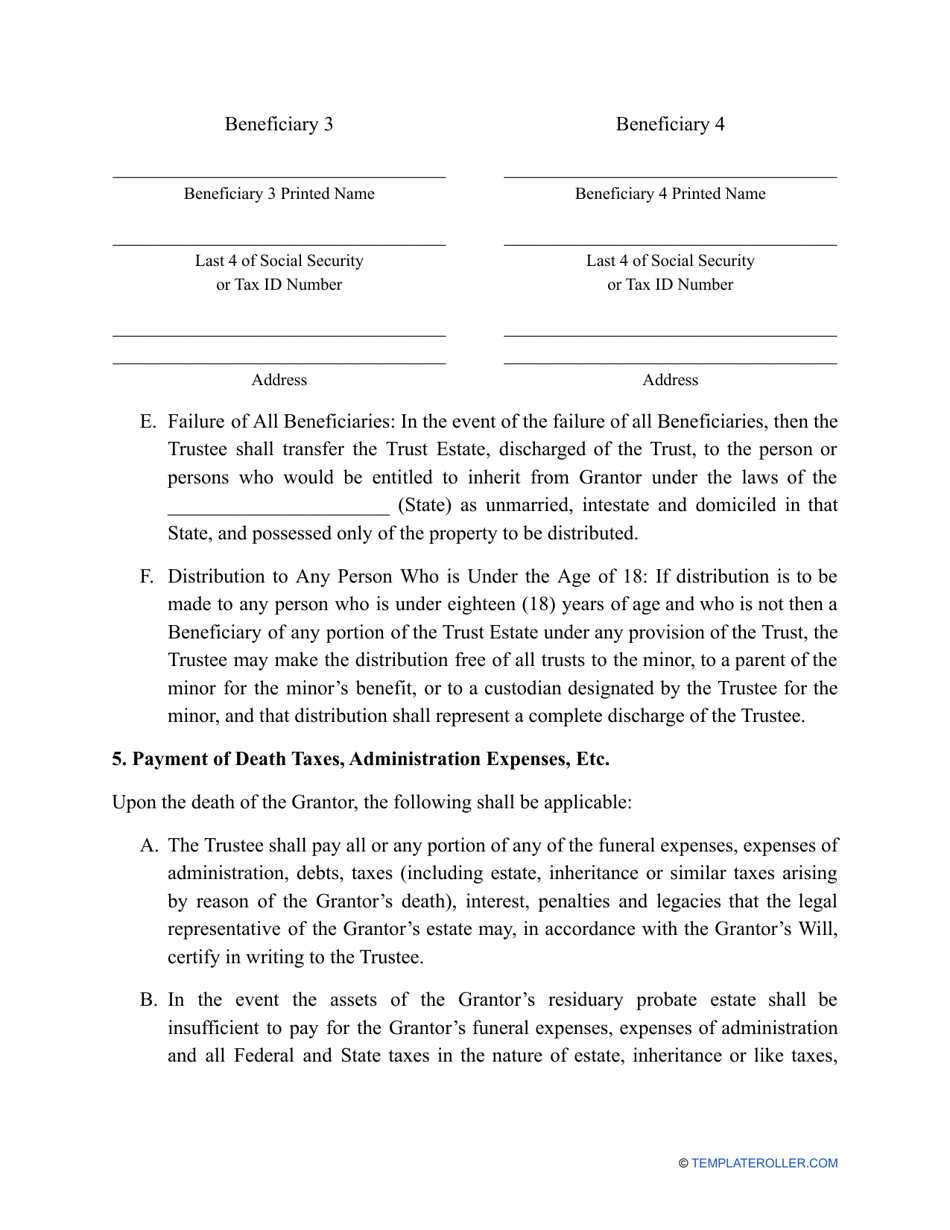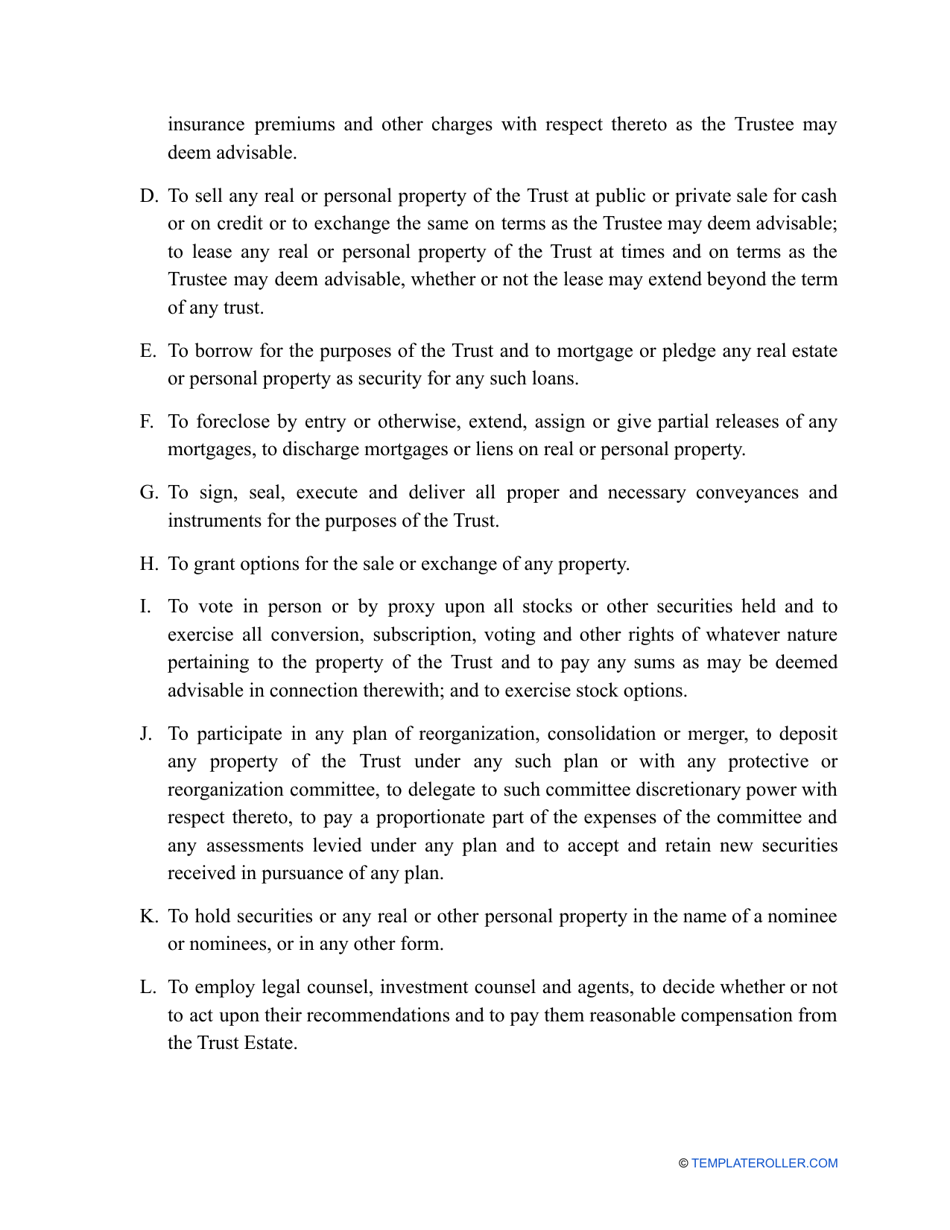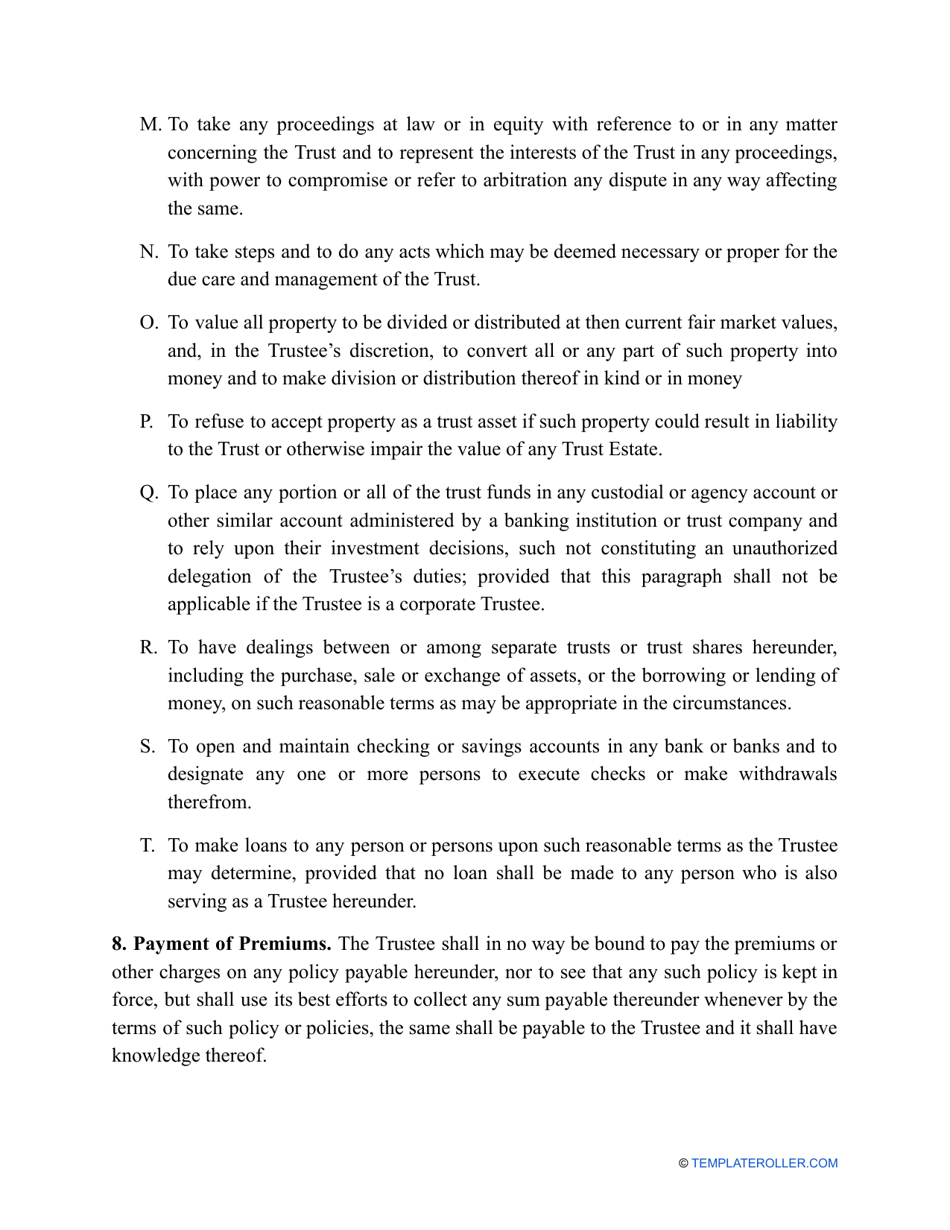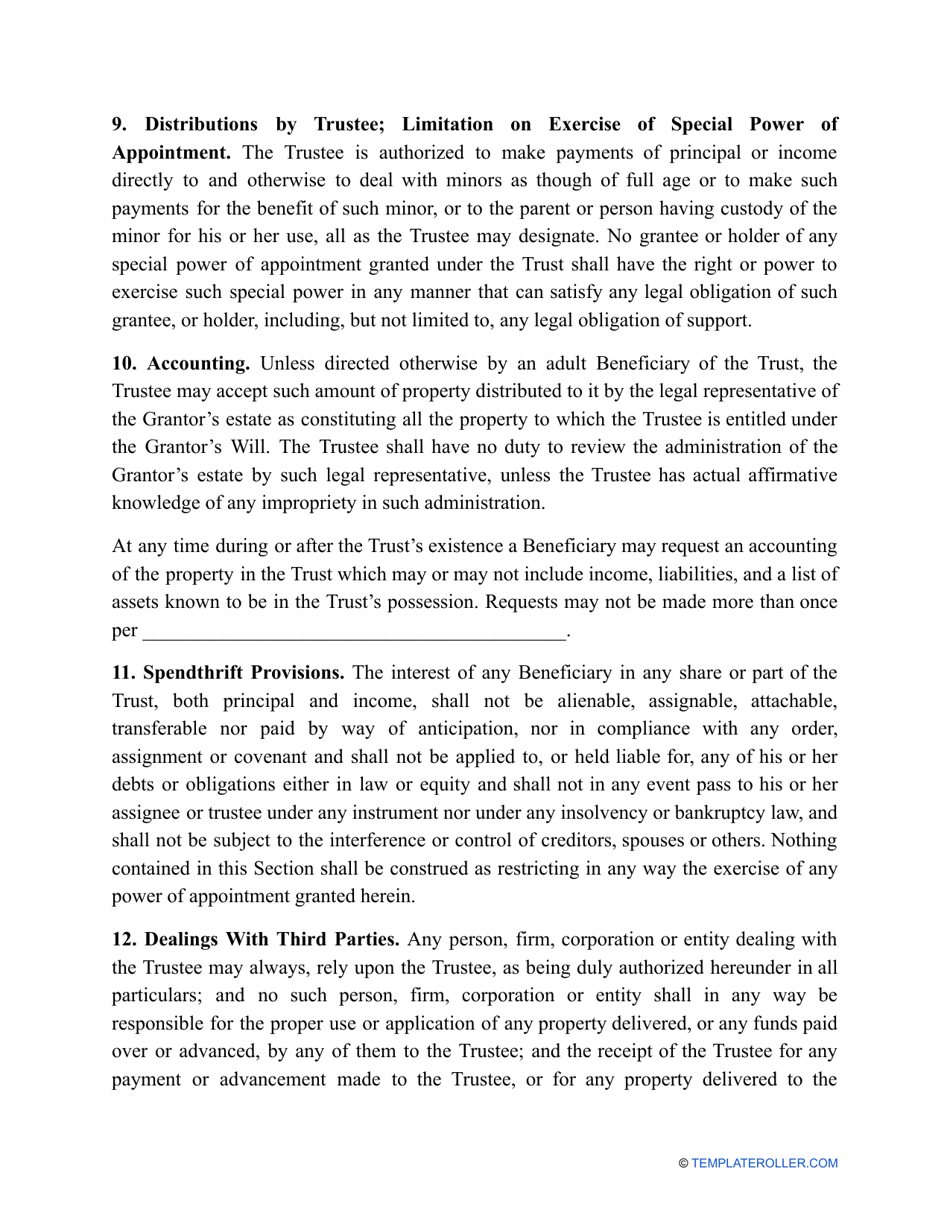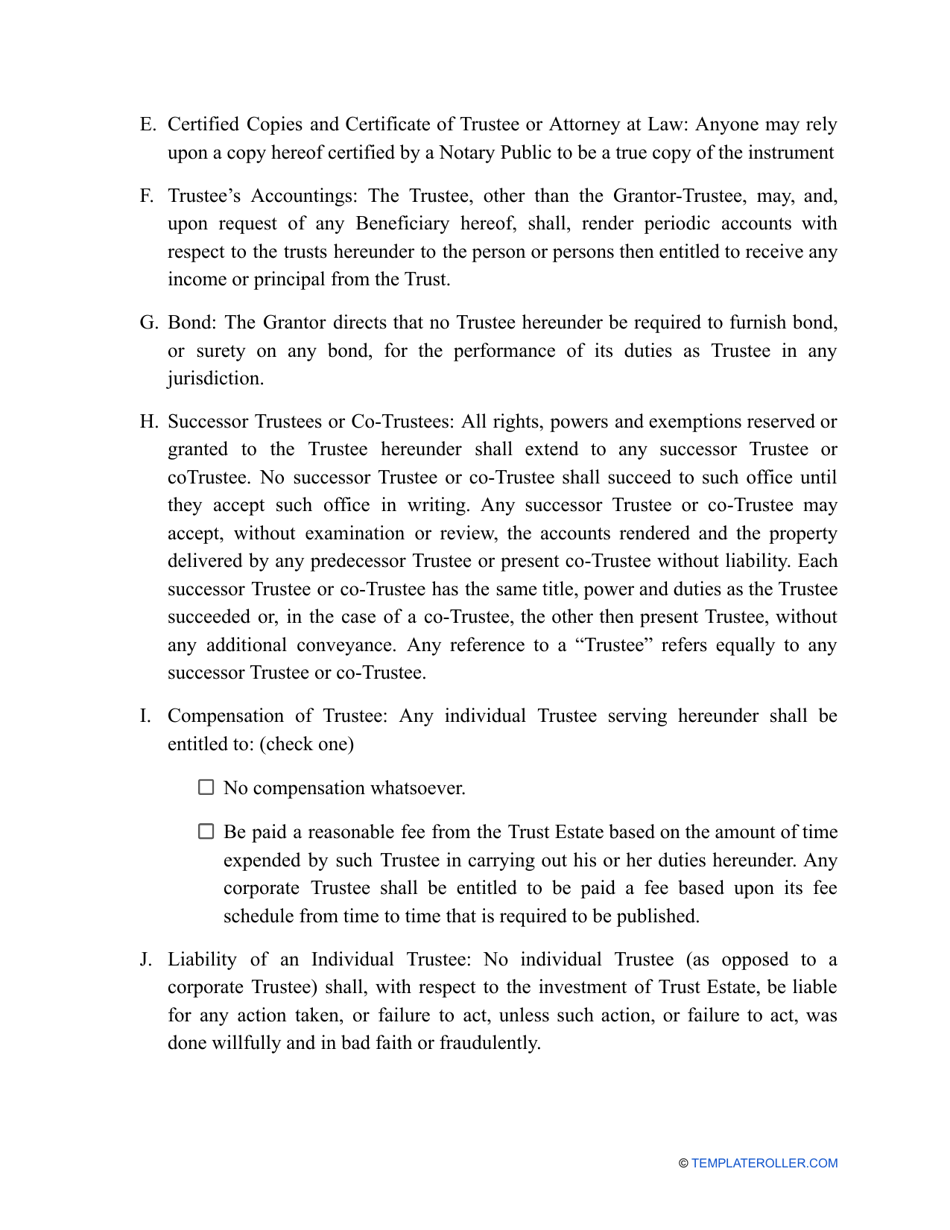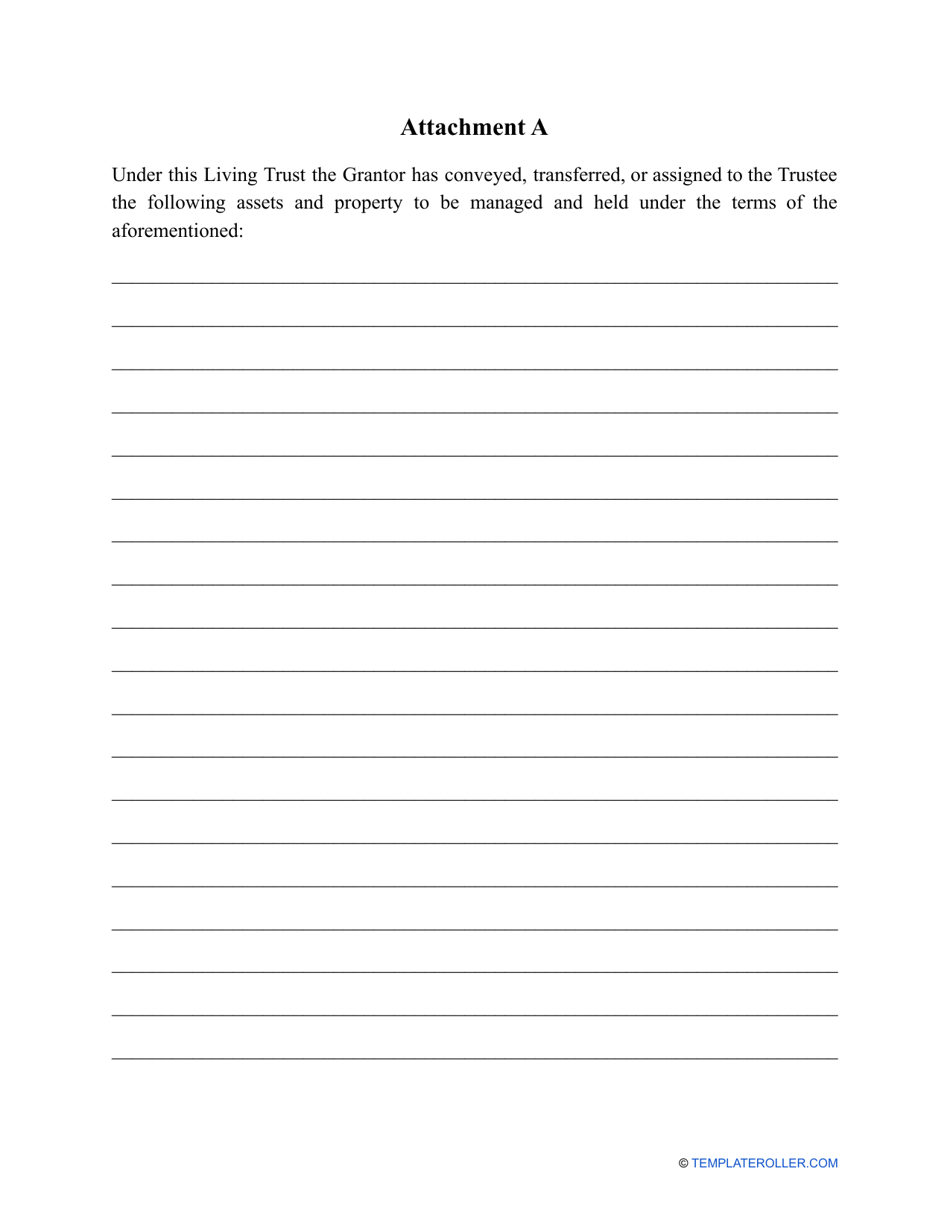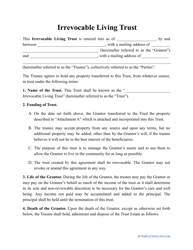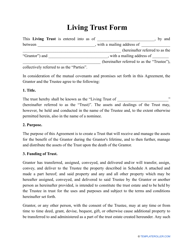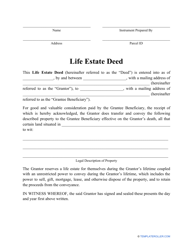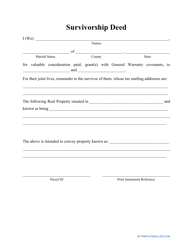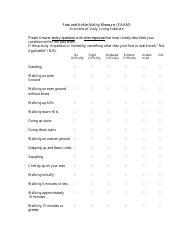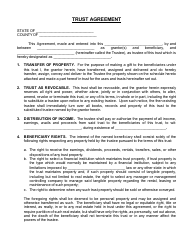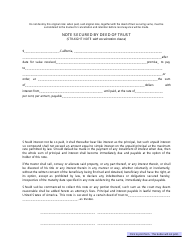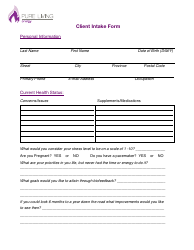Revocable Living Trust Form
What Is a Revocable Living Trust?
A Revocable Living Trust is a formal document that establishes a trust - the property owner appoints an individual who is going to administer the assets on behalf of beneficiaries upon the death of the person that created the trust. One of the main benefits of a Revocable Living Trust is the possibility to amend it or revoke it, as the name hints, at any time.
Unlike an Irrevocable Living Trust whose provisions are set in stone, this document is more flexible which makes it a better option especially if you think you may change your mind about the distribution of assets later in life.
You can find a Revocable Living Trust template through the link below.
How Much Should a Revocable Living Trust Cost?
While it is possible to draft and fill out a Living Trust Form on your own, if you own a substantial number of assets, want to distribute your property among several beneficiaries, or take care of your children who are still underage at the time of making a trust, it is advised to seek professional advice. Lawyers in different locations will request different fees according to their rates after assessing the difficulty of the trust but as a general rule, the Revocable Living Trust cost ranges between $1,000 and $5,000 for a single individual and $2,000-$10,000 for a married couple.
This price usually covers several documents like a power of attorney, the will, the trust form itself, and the preliminary review of the trustor's finances and records. Alternatively, you may contact a local lawyer to learn more about the regulations regarding trusts in your area and only pay for a consultation to be able to write the necessary documents for yourself and your relatives potentially saving money.
What Is the Purpose of a Revocable Living Trust?
If you are setting up a trust for your beneficiaries, you are simultaneously managing and safeguarding your assets. There are multiple advantages of a Revocable Living Trust you should know about if you are thinking about estate planning:
- Skip the probate process . Your beneficiaries will not have to deal with time-consuming probate waiting for probably years to get access to the assets you want them to receive after your death.
- Keep your assets away from being publicly recorded . The wills become available to the public - they can be looked up and reviewed at the local county by anyone, while a Living Trust Form is private and no one apart from the trustor and the people witnessing the process of signing will know it exists.
- Manage your assets on behalf of your children in the event of your sudden passing . You have the right to allocate your funds to your kids when they become adults or at a later age. Besides, a document of this kind can contain instructions for the trustee that becomes the guardian or helps to look for one.
How to Create a Revocable Living Trust?
Once you have contemplated the pros and cons of a Revocable Living Trust and determined it would be a correct decision for you to have one in place, you may write this legally binding document to distribute your possessions. Include the following elements in a Living Revocable Trust Form:
- Identification of the trustor and a brief description of their family situation . Whether you are leaving your money and property to your relatives or you are setting up a trust to disinherit them, it is important to correctly reflect your marital status and the number of legitimate heirs in writing.
- Trustee's personal details and confirmation of the trustor's intention to put them in charge of dealing with the assets indicated in the form . Often, a trustee is entrusted to look after the minor children of the trustor - the document will allow you to look out for the financial interests of your family and their personal safety.
- List of the assets transferred into a trust . This is usually the largest section of the document - it is your duty to ensure the description of all items, especially real estate, is recorded properly. Include references to other documents - certificates of title, deeds, insurance policies - that verify your material rights.
- Names of beneficiaries - individuals entitled to inherit the assets outlined in the form . Explain who receives the contents of the trust - specific items should go to certain people, otherwise, the document may be disputed and the trustor's wishes to let their beneficiaries come into possession of their property might remain unfulfilled.
- Signature of the trustor . Sign and date the trust document before two or three impartial witnesses and notary public - a notary seal will add an extra level of protection to your arrangements.
How to Amend a Revocable Living Trust?
Since it is very likely the individual that arranges a Living Revocable Trust for their estate plan will decide to change it months or years after it was set up, it is important to determine the best way to modify the text of the original document. Choose the method you consider the most suitable for your situation below:
- Compose a separate amendment and attach it to the trust . Make sure you refer to the main document in the text of the amendment and outline in full detail what are you changing.
- Rewrite the trust if you are planning to make several changes that modify different sections of the document . You must be absolutely clear in your wording certifying this document does not mean revocation and you are opting for a restatement instead.
- Revoke the previous trust document completely and write a new one if you believe the modifications are too drastic and want to just start from scratch . You will have to appear in front of a notary public who will confirm your intentions by putting their seal under your signature.
Still looking for a particular template? Take a look at the related forms below:



















